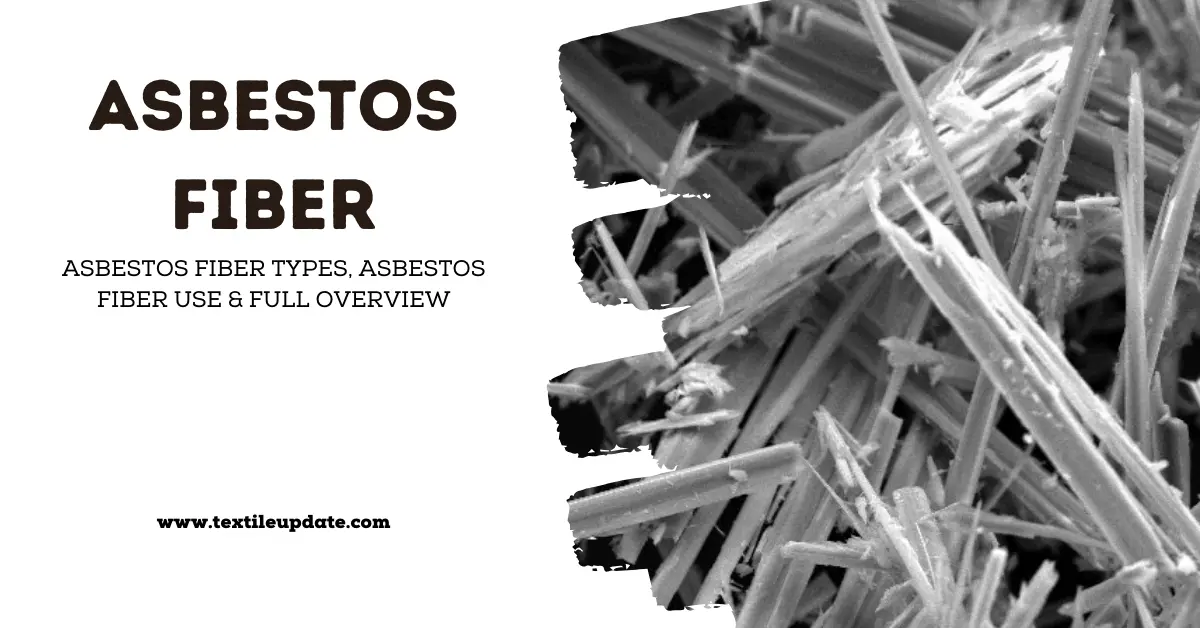What is asbestos?
Asbestos fiber is a naturally occurring mineral composed of soft and flexible fibers that are resistant to heat, electricity, and corrosion. These properties make minerals useful but they also make asbestos exposure highly toxic.
Table of Contents
Asbestos is an effective insulator and can be used in fabrics, paper, cement, plastics and other materials to make it stronger. But when someone inhales or injects asbestos dust, some mineral fibers can get stuck in their body forever.
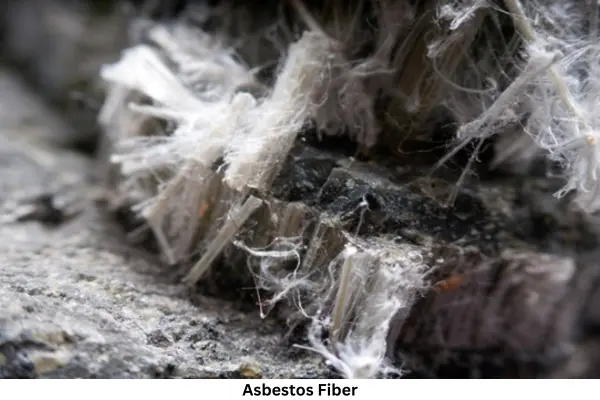
For decades, stuck asbestos fibers can cause inflammation, scarring and eventually genetic damage. A rare and invasive cancer called mesothelioma is almost exclusively caused by asbestos exposure. Asbestos causes other types of cancer as well as progressive lung disease.
What are the types of asbestos fiber?
There are two types of this fiber;
Spiral:
Serpentine asbestos develops in a layered or tiered form. Chrysotile asbestos is the only type of asbestos in the snake family. This type of asbestos fiber is more flexible than other types of asbestos and can be cut and woven into fabric. About 95% of the chrysotile asbestos used in buildings in America is asbestos and it is still being used in developing countries.
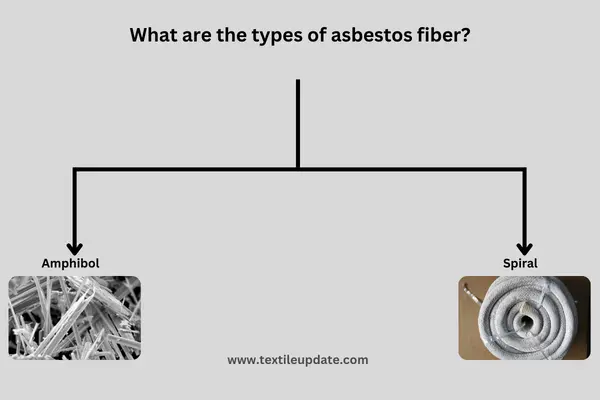
Amphibol:
Amphibol asbestos fibers have a needle-like structure. The types of asbestos fibers included in the amphibol group are amoebaite, crocidolite, tramolite, antophyllite and actinolite. The color of these minerals differs from chrysotile asbestos, and is used as a fire retardant in thermal insulation products, asbestos insulation boards and ceiling tiles.
The Occupational Safety and Health Administration (OSHA) states that all asbestos fibers pose a threat to human health. The amount of contact with any asbestos is not safe. Exposure to asbestos fibers can lead to debilitating and fatal conditions, including mesothelioma. Warn your doctor today if you have been working or exposed to asbestos in your home.
What are the uses of asbestos fiber?
Asbestos was nicknamed the “Magic Mineral” because of its unique chemical composition and physical properties that made it suitable for use in thousands of products, from floor tiles to sewer pipes to insulation in street signs.
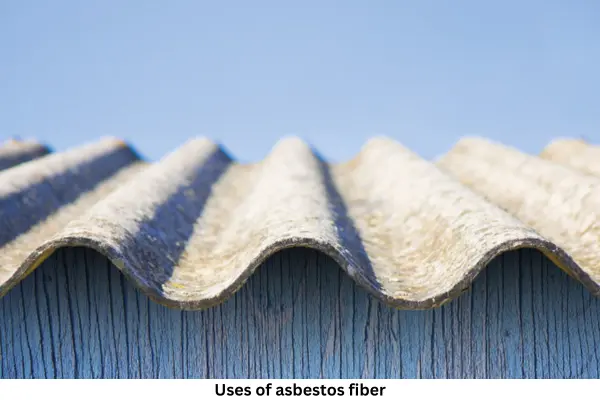
Records show that asbestos has been used by humans for more than 4,000 years; In this century it has used more than 3000 products including cement building materials, pipe work leggings, insulating mattress and rope, fire resistant insulation board, spread fire-proofing products, floor tiles and covering, water and sewer pipes, gas masks, abrasive materials. For brakes and grips, lifts, and equipment.
Common types of asbestos products
Asbestos adhesive: adhesive for roof sealant, pipe leggings, duct tape, furnace cement and floor, wall panels, ceiling tiles, and interior fixtures. Asbestos Construction Mastic and Gunning Mix: Used to repair or fill industrial materials such as furnaces, tiles, or floors.
- Asbestos duct connectors: Fabric that connects parts of HVAC systems together
- Asbestos Electrical Components: Attached Panels, Electrical Welding, Molding Cement Bases, Flash Guard Paper, Wire Insulation, and Cable Wrap
- Felt asbestos: Used in roofing, flooring and paper mills
- Asbestos fireproofing: fireproof gear, tar paper, paint and spray-on fireproofing
- Asbestos gaskets: Heat-resistant seals for joining machine parts, valves and hoses
- Asbestos insulation: loose-filling insulation, pipe wrap, block insulation, shovel tiles and spray-on insulation
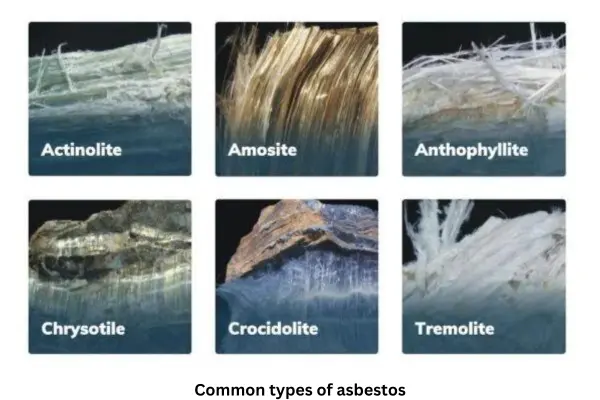
- Asbestos Plastics: Used in equipment, kitchens, equipment and vehicles, especially for brake pads
- Asbestos sheets: Whelan cement sheets, flat cement sheets, drywall and “asbestos wood” for roof pendants and siding
- Asbestos textiles: protective clothing, furnishings and fire blankets
- Asbestos vinyl products: floor tiles, sheet flooring and wallpaper
Other products that contain asbestos
- Asbestos Cigarette Filter: Used in Kent Micronite cigarettes from 1952 to 1956
- Asbestos Consumer Products: Containers, Ashtray Coasters, Viking for Gas Limits, Mesh Ice for Christmas Decorations and Insulated Coatings for Hair Dryers and Cooking Equipment
- Asbestos Laboratory Equipment: Laboratory Fame Hoods, Equipment Insulation, Bannersen Burner Mats, Gauze Pads and Gloves
- Asbestos-contaminated makeup: Cosmetics made from contaminated talc
- Asbestos-contaminated talcum powder: Baby powder and other personal hygiene products made with contaminated talc
- Asbestos-contaminated zonolite insulation: -Attic insulation made from contaminated vermiculite.
Asbestos used in vinyl, resins, and composites
As an added strength, asbestos was once widely used in floor applications. The two main types of flooring were vinyl tiles and sheet-layered vinyl. Tiles, often known as thermoplastic tiles, were used from the end of World War II until the 1960s. Often hidden beneath other floor layers, asbestos tiles were commonly used as a builder finish, before being placed on top of more decorative finishes. Vinyl tiles were available in a variety of colors and were often decorated in patterns if used as a finished surface.
When is asbestos dangerous?
The most common way asbestos fibers enter the body is through breathing. In fact, elemental asbestos is generally not considered a smoker unless it emits dust or fibers into the air where they can be inhaled or eaten. Many fibers get stuck in the mucous membranes of the nose and throat where they can be removed but some can penetrate deep into the lungs, or enter the digestive tract when swallowed. Once these get stuck in the body, the fibers can create health problems.
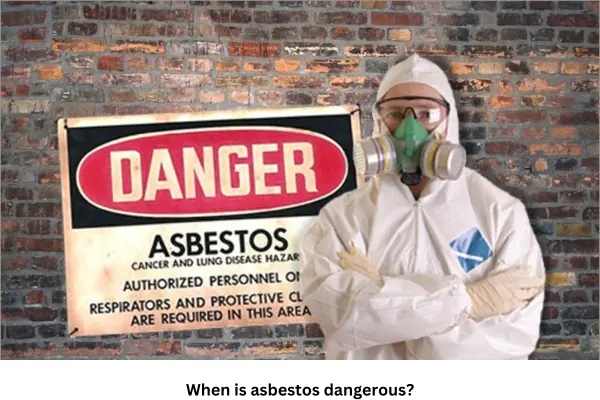
Asbestos is most dangerous when shaken. The word “friable” means asbestos is easily crushed by hand, leaving the fibers in the air. Spraying on asbestos insulation is extremely complex. Asbestos floor tiles are not.
Asbestos-rich ceiling tiles, floor tiles, tops of undamaged laboratory cabinets, shingles, fire doors, siding shingles, etc. will not be released if the asbestos fibers are not interrupted or damaged in any way. If an asbestos ceiling tile is drilled or broken, for example, it can leave fibers in the air. If it is left alone and no trouble occurs, it will not happen.
Degradation and deterioration will increase the concern of asbestos-rich materials. Water loss, constant vibration, aging and physical effects such as drilling, grinding, buffing, cutting, sawing or striking reduce the chances of the fiber leaving.
Health effects
Since asbestos fibers are so hard to destroy, the body cannot break them down or remove them once they are trapped in the lungs or body tissues. They stay in places where they can cause disease.
There are three primary diseases associated with asbestos exposure:
- Asbestosis
- Lung cancer
- Mesothelioma
Asbestosis
Asbestosis is a serious, chronic, non-cancerous respiratory disease. Inhaled asbestos fibers enlarge the lung tissues, causing their wounds. Symptoms of asbestosis include shortness of breath and a dry hoarse sound in the lungs during shortness of breath. In its advanced stages, the disease can lead to cardiac failure.
There is no effective treatment for asbestosis; The disease is usually incurable or fatal. The risk of asbestosis is very low in those who do not work with asbestos; The disease is rarely caused by exposure to neighbors or families. Those who renovate or demolish buildings, including asbestos, may be at significant risk depending on the nature of their exposure and the precautions taken.
Lung cancer
Lung cancer is the leading cause of death in asbestos exposure. The incidence of lung cancer among individuals directly involved in the mining, imaging, production and use of asbestos and its products is much higher than in the general population. The most common symptoms of lung cancer are cough and changes in breathing. Other symptoms include shortness of breath, persistent chest pain, dizziness and anemia.
People who have been exposed to asbestos and cigarette smoke, such as some other carcinogens, have a higher risk of developing lung cancer than people who have been exposed to asbestos alone. A study found that asbestos workers who smoke are about 90 times more likely to develop lung cancer than those who do not smoke or have not been exposed to asbestos.
Mesothelioma
Mesothelioma is a rare form of cancer that is most often seen in the lining of the lungs, chest, abdomen, and (rarely) the lining of the heart. About 200 cases are diagnosed each year in the United States. Mesothelioma is associated with asbestos exposure in virtually all cases. About 2 percent of all miners and textile workers working with asbestos and 10 percent of all workers involved in making asbestos gas masks make mesothelioma.
Individuals who use asbestos in asbestos mines, asbestos mills and factories and shipyards, as well as those who manufacture and install asbestos insulation, have an increased risk of mesothelioma. Thus, individuals who work with asbestos workers, near asbestos mining areas, near asbestos factories, or near shipyards where the use of asbestos results in large quantities of airborne asbestos fiber.
Other cancers
Evidence suggests that asbestos may be blocked due to cancers in the esophagus, larynx, oral cavity, stomach, colon and kidneys. For more information on asbestos-related cancers, contact the local chapter of the American Cancer Society.
Diagnostic factors
Three things seem to determine the likelihood of one of these asbestos-related diseases:
Amount and duration of exposure – The more asbestos you come in contact with and the more fiber that enters your body, the more likely you are to have asbestos related problems. While there is no “safe level” of asbestos exposure, people who are exposed more frequently over a longer period of time are at greater risk.
Health risks at the effects of asbestos?
Asbestos fibers can pose a health risk if inhaled, as inhalation is the main way asbestos enters the body. Used
- Cement Sheeting (Fibro)
- Sewerage and flue pipes
Roofing, guitaring, and flexible building boards (e.g. billboards, hard flex, etc.). Similar cement sheeting products are used today but it is ‘asbestos free’ Brakes, grips, and gaskets. Fiber asbestos was used in some parts of the house as roof insulation in the 1960s and 70s.
How can asbestos affect my health?
Respiratory asbestos fibers can cause asbestosis, lung cancer and mesothelioma. The risk of infection with these diseases increases with the number of respiratory fibers and the amount of asbestos fiber you smoke but the risk of lung cancer is higher. People who get health problems by inhaling asbestos usually come in contact with high levels of asbestos for a long time. The symptoms of these diseases are usually not seen for about 20 to 30 years after the first manifestation of asbestos. A small amount of asbestos fibers is always present in the air and everyone is breathing without any adverse effects. Most people come into contact with very small amounts of asbestos in their daily lives and without developing asbestos-related health problems. Studies have shown that these products, if left silent and left intact, do not pose a significant health risk. If the asbestos fibers are bound to the cement, you usually do not need to remove the fibro.
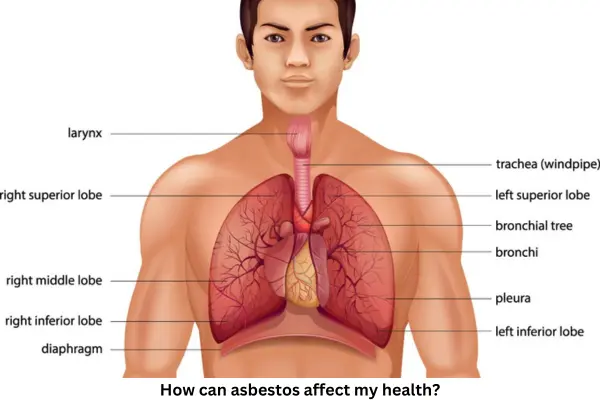
People who have been exposed to asbestos and affected their health usually work in the asbestos mining or milling industry, work in industries involved in making or installing asbestos products, or come from close family members. In all of these situations there was contact with higher levels of airborne dust, either from the process involved or from the workers ’clothing.
Asbestos material has different forms, different risk levels
If asbestos fibers are in stable materials such as asbestos-cement sheets such as those bound to fibro and in good condition they have very little health risk. However where fibro or other bonded asbestos sheeting is damaged, damaged or handled fibers and airborne can be a health hazard. It can create a hassle of unsafely troublesome removal or removal.
Pipe lagging and spread roof insulation are not bound to the matrix in materials such as asbestos fiber. If these materials are disrupted or removed the chances of releasing high concentrations of fibers into the atmosphere are much higher.
Removal of Asbestos Removal of loose/degraded asbestos or bonded asbestos sheeting in quantities greater than 10 square meters must be done by a licensed person. Contact 131555 or your local council’s environment and pollution line office for advice on asbestos waste removal, disposal, and transportation at NSW.
Security;
- Do not disturb the soil or any other material considered to be contaminated by asbestos fibers. Short-term warnings to reduce exposure include:
- Care should be taken in the vicinity of electrical appliances to spray soil/dust with water to prevent airflow.
- Keep with plastic sheeting or a liquid if possible to avoid contact with the weather.
- Prevent access by children and pets.
- Kids toy covers,
- Use a wet clean-up method instead of a dry broom or vacuuming.
- Where loose fiber asbestos insulation may be installed it will not enter the roof space and will not limit access to the roof cavity with man-holes and vents.
- You must enter areas of your home that are considered to be contaminated with asbestos fiber dust if you use a suitable Australian Standards (AS) approved respirator or dust mask for work.
More info:
Further advice on asbestos health risks can be obtained from your local public health unit at 1300055.
- General information about asbestos can be found in the work cover.
- Asbestos and health risks
- Avoid spider bites
- Sydney Harbor and Paramatman River Dioxins – Recreational Fisher Health Advice
- Ethylene oxide
- Exposure to lead in children
- Spread by EDC of Botany.
Abstract
Risks related to asbestos emerged from the past when high-dose occupational exposures were frequent. The linear no-threshold dose-response pattern has been adopted, but its applicability to low-dose asbestos exposure has never been proven. Morphologically, malignant mesothelioma may be similar to different cancers. There are diagnostic algorithms; However, a tumor identified by the standard method as mesothelioma is not a well-defined entity, in all cases quite different from other cancers. The effects of sound research and screening have probably contributed to the increased incidence of mesothelioma and other asbestos-related diseases in the exposed population. Diseases related to asbestos have been extensively studied in Russia.
